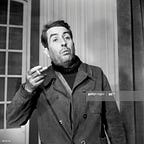On the Empty Provocations of Cruel Intentions (Kumble, 1999)
A genuinely terrible movie, intermittently successful as an extremely blunt satire, but ultimately the sort of terrible movie that flatters ones negative feelings towards it, in the way it suggests a much more interesting movie. A depiction of eroticism totally devoid of any eroticism (an astounding achievement), it ends up being hardly more frank about sex than something like Gossip Girl, and uses the same scoring cues as well, so the result is every scene plays like some interstitial scene in a CW drama. It doesn’t help that the performances are all wildly uncalibrated as well, though Selma Blair does some interesting work, truly playing her character as a child, lending the role a sort of porny innocence. Gellar in particular shines as always (“I don’t fuck losers.”), true enough, this even has some brief Southland Tales tonalities at points. But the film is as confused about itself as its actors are; Phillippe’s character is such an unequivocally awful person but you’re expected to come around on him because he develops feelings. It’s unfortunate that it doesn’t follow through on the cruelty it promises in the title, or on the ambiguity it suggests in Phillippe’s intentions- I want to wonder if he truly loved Witherspoon or if he played the role into death to defeat Gellar (his true love?) forever, but wrongly, there isn’t any ambiguity around this.
But what about the flattery- fine. I can imagine this has been called bad Antonioni, and fair enough, it’s there (Phillippe telling Witherspoon he doesn’t love her). It does suggest a better movie, with stronger and more interesting ideas and at times gets close to them. There’s a sequence, a cascading succession of movements that line up the plot points that carry the film into its denouement.
A character leans over his sleeping lover in bed atop satin sheets after receiving an ominous phone call.
Gellar’s scheming facade fades across the Manhattan skyline.
Philllippe, spying on Witherspoon’s window from across the street like some jilted Romeo to her frustratingly principled Juliet, walking away as the camera moves from him and zooms up to her window as she reveals herself and spots him down below, the likelihood of such a confluence of movements and sight-lines giving way to its representative emotional thrust; the movement is descriptive, it hardly matters what’s in the frame.
Or take the Penn Station scene, Phillippe speeding across the Queensboro bridge in his vintage roadster (the film makes the mistake of revealing the Manhattan skyline here, it would do better to keep us with Phillippe and his car), cutting to Penn Station, all cold and steely blues and greys. Witherspoon on the escalator, moving up as Phillippe waits for her at the top, they come together and the public space is compressed into a private, intimate one, no diegetic sound filling the station other than their dubbed dialogue, sounding cleaner and more vulnerable than it should. Nondescript bodies, grey and brown shapes, fly past them as they kiss, then a cut to the act itself, the film’s only moment of true intimacy (intimacy, never eroticism, despite its stated intentions), a stark shift in color temperature, the image now as warm as their bodies.
And finally, in the last 20 odd minutes, the movements begin to speed up exponentially, turns of power exchanging so rapidly it’s comically exaggerated, yet somehow bizarrely gripping as a means of delivering narrative. The most shocking image comes at the end, one of its most intelligent decisions- Gellar and Witherspoon together (as one realizes that somehow, this entire time, these two characters have never crossed paths) in front of the bathroom mirror at school, in their uniforms, finally placing them in the context of high school, in the context of childhood.
The film is a bizarre failure, a shot of Phillippe’s erotic diary entry on Gellar is summative- we don’t need to read the words on the page, we just need to register a picture of words; indeed the whole film is only a picture of substance, we get an understanding but only incidentally.
